We’ve just set a record for staying put – we’ve been in Valencia for a consecutive seven weeks without even one overnight train trip!
I’ve been busy taking an immersion Spanish course which required spending about five hours a day studying español. Ed has been focused on getting his Spanish driver’s license. I’m a little better at speaking Spanish and he’s made progress on being able to drive here. In between all this effort, we’ve managed to squeeze in some time each week to explore Valencia. It’s been fun playing touristas in our own city.
Week One – The Hortensia Herrero Art Centre
This new art museum is housed in a former gothic palace built in the 14th century. The restoration took more than five years to complete and opened just a year ago. Construction crews discovered fragments of a Roman circus dating back to the 2nd century AD and these ruins have been preserved for visitors to see. Check it out: https://www.cahh.es/en/
The patron, Hortensia Herrero, is a wealthy Valenciana who purposely acquired art so that she could share her extensive collection with the public. It’s an incredible building with amazing art by many world-renowned artists. We especially enjoyed the site specific sculptures and the interactive pieces.
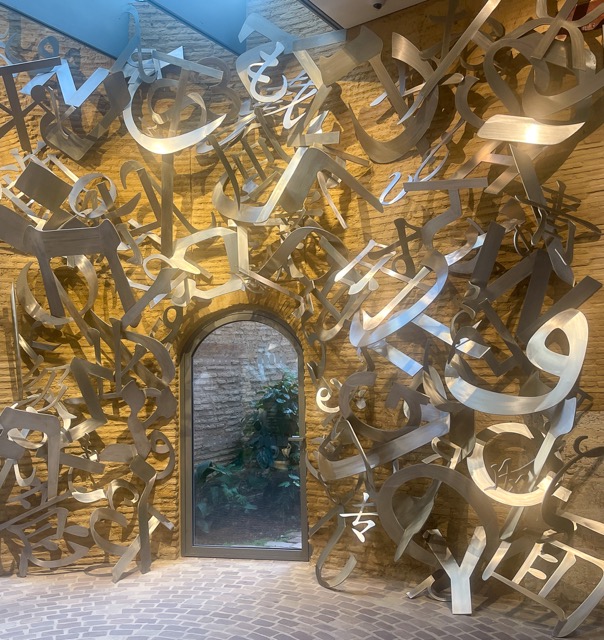
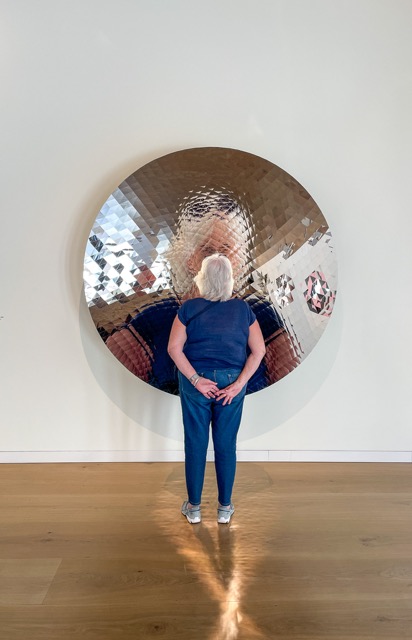
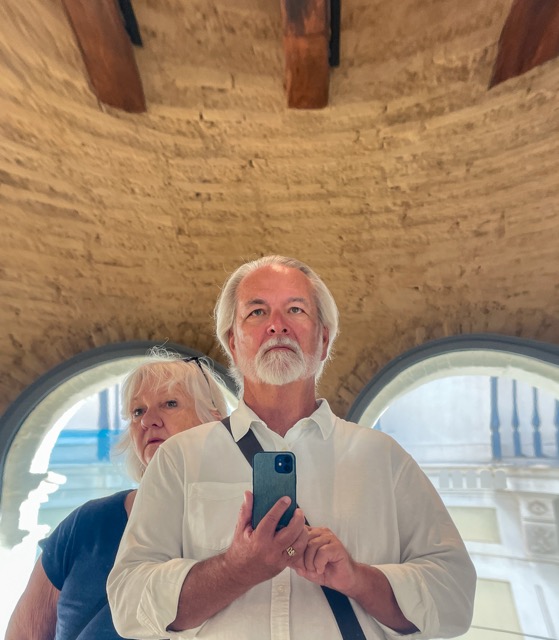
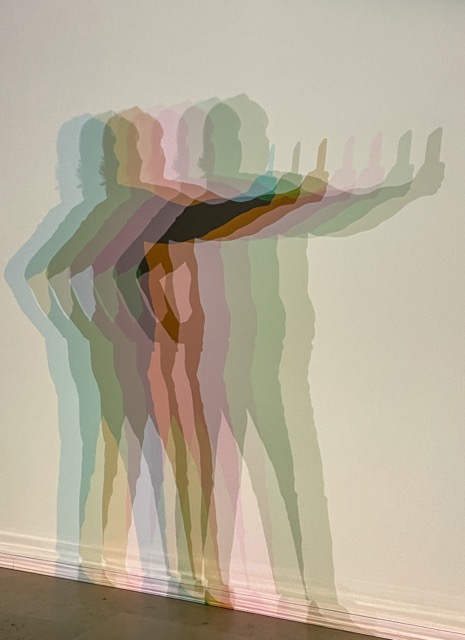
After our museum visit, a little refreshment was needed so we stopped for an Agua de Valencia. This uniquely Valencian cocktail is found all over the city. It was created in 1959 by a Valencian named Constante Gil for his customers who were getting bored with Agua de Bilbao (the house sparkling wine). It’s an intense combination of ingredients that starts with fresh (local) orange juice to which is added a splash of vodka, gin and cava – yep, that’s right, all three in one cocktail. Agua de Valencia, meant to be shared, is served in a pitcher along with a champagne coupe of the style said to be modeled on the breast of Marie Antoinette. I’m not sure about that image!
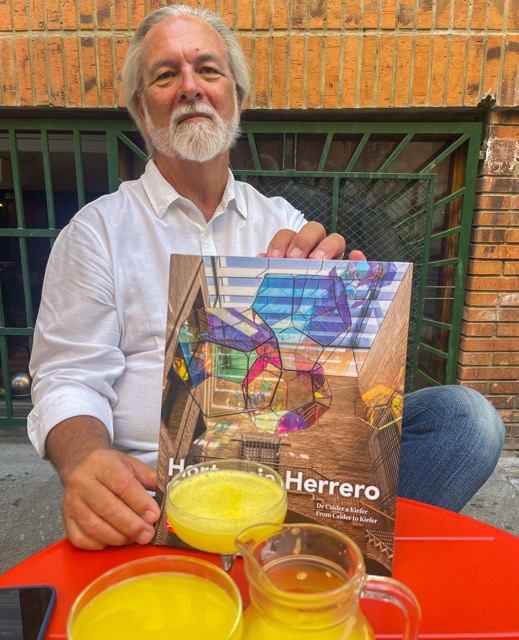
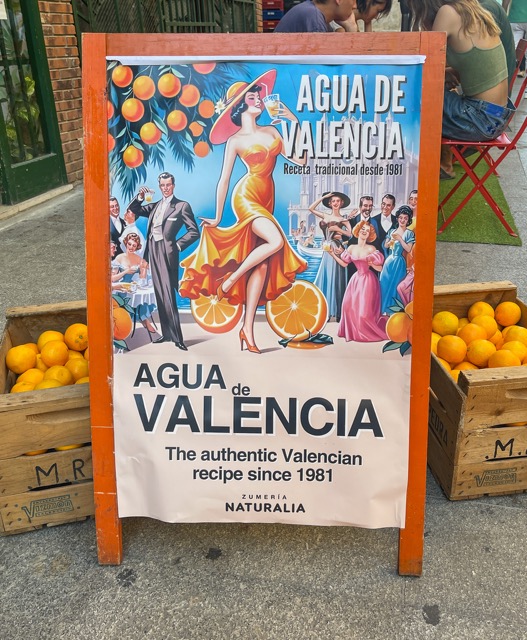
Week Two – “In the Sea of Sorolla with Manuel Vicent”
Joaquin Sorolla is one of Valencia’s favorite sons who is called “the painter of Valencia and it’s light.” He was the most internationally known Spanish artist of his day (b. 1863, d. 1923) and one of the key figures in the history of Spanish art. The exhibit that we saw is a special collection of more than 100 canvasses and was presented in a novel approach. A well-known Valencian writer, Manuel Vicent, curated the exhibit by offering a dialogue between painting and literature with the Mediterranean Sea as the common thread. https://www.fundacionbancaja.es/exposicion/en-el-mar-de-sorolla-con-manuel-vicent/
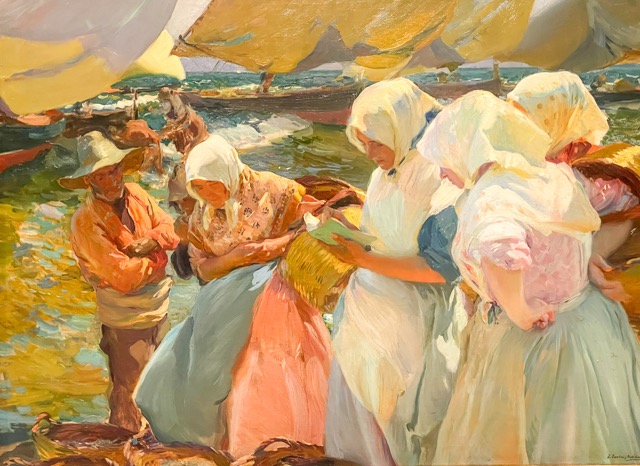
In addition to the special Sorolla exhibit, we enjoyed a modern art exhibit by Madrid artist María Arangurnen. She uses industrial materials and recycled plastics to create abstracts. Inspiring!
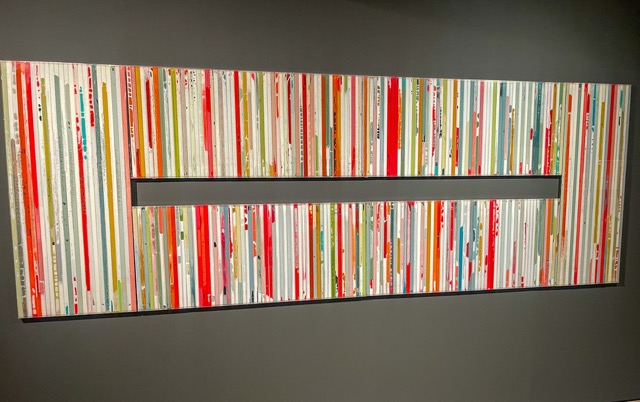
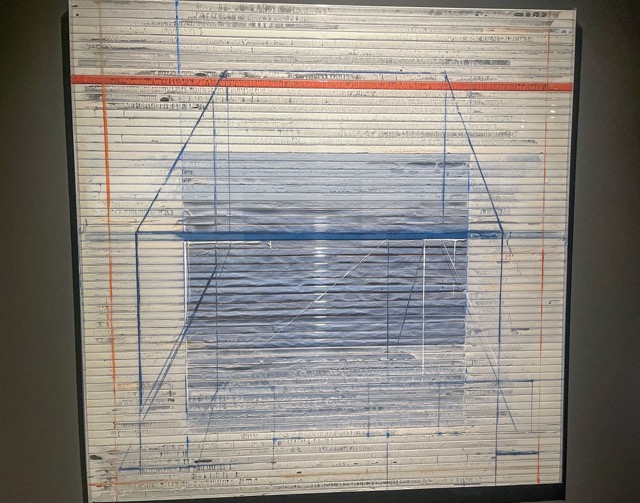
Week Three – The Sistine Chapel of Valencia & Valencia’s Roman Ruins
Just a two-minute walk from our place, is the Iglesia de San Nicolás de Bari y San Pedro Mártir de Valencia (San Nicolas Church). This church was erected as a parish church around 1242, remodeled in the Gothic style between 1419-1455, and redecorated in the Baroque style with fresco paintings between 1690-1693. It’s an excellent example of a 15th century Gothic building with 17th century Baroque decoration. This little church sits on hallowed ground. Originally, there was a Roman temple on the site, then a Visigothic paleo Christian temple, and next a mosque with the arrival of the Muslims in the 8th century. Check out the virtual tour here: https://www.visitavirtualsannicolasvalencia.com/
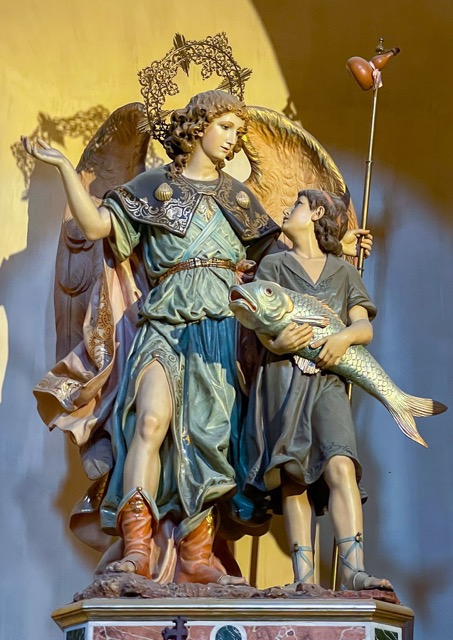
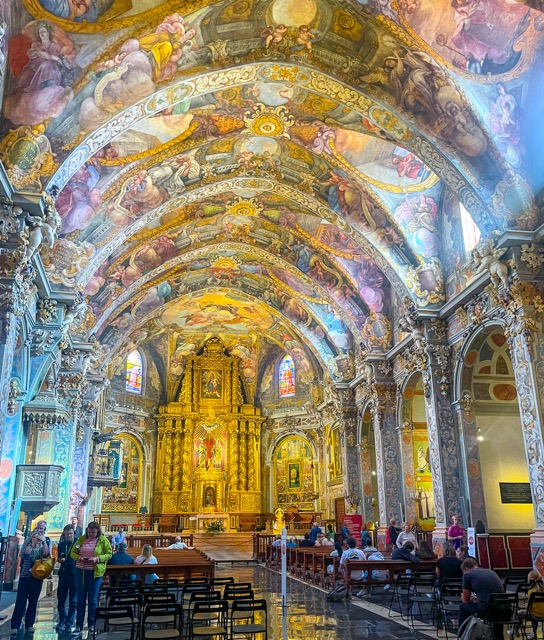
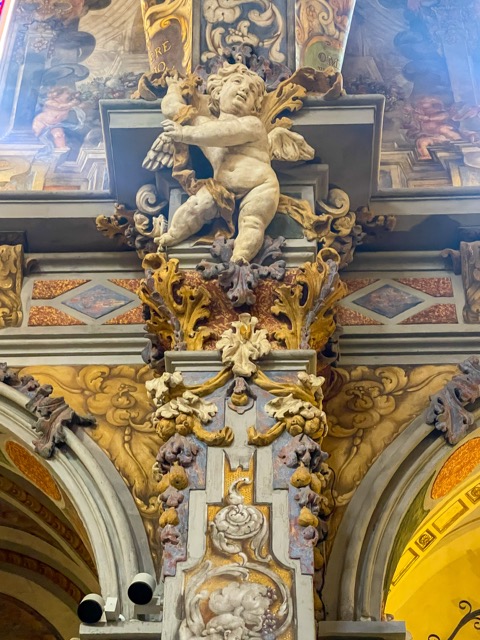
Next, we strolled through Plaza de la Virgen to visit the Centre Arqueològic de L’Almoina where remnants of the city’s founding by the Romans in the 2nd century BC are preserved. For background, here’s a brief history of Valencia:
- 138 BC – Junius Brutus founded the city of Valencia (Valentia)
- 75 BC – Valencia was sacked in a war between Pompey and Sertorius
- 25 BC – The Romans re-founded Valencia
- 500 AD – the Visigoths drove out the Romans
- 711 AD – The Muslims arrived (the region was named Balansiya)
- 1238 AD – Christians conquered the Muslims and took over the city (Valencians still celebrate the entry of Jaume I on October 9th)
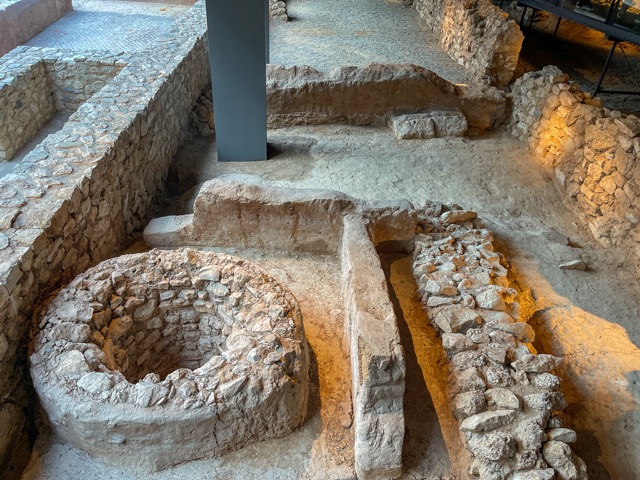
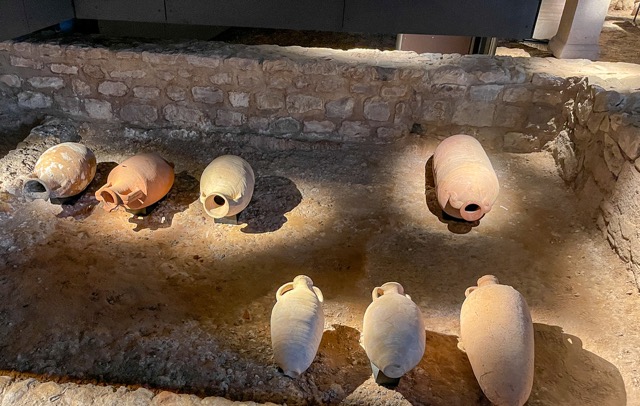
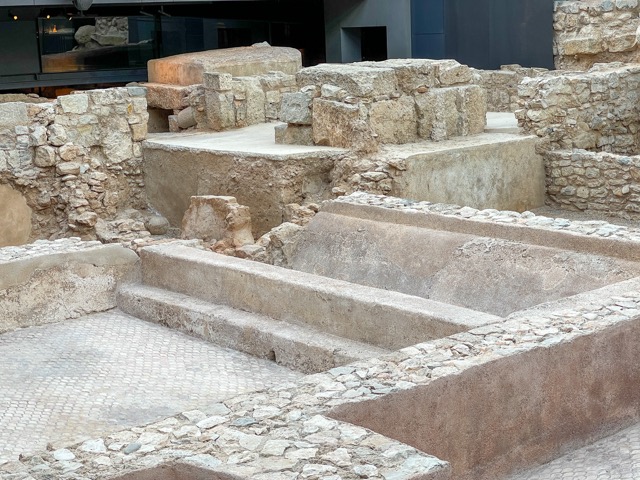
The Valencian word “almoina” means “alms” and this name comes from the medieval period when there was a charity center for the disadvantaged on this spot. The current museum complex was completed in 2005 and is considered one of the best archaeological sites in Europe. It’s feels like the soul of the city. You can check it our here – https://www.valencia.es/val/almoina/introduccio (but you’ll need to ask Google Translate for assistance).
Week Four – City of Arts & Sciences
The buildings of Valencia’s Ciutat de les Arts i les Ciències de Valencia are the work of an internationally renowned architect, Santiago Calatrava. Completed in 2006, these buildings have become icons of the city. Last year, we visited the aquarium, the largest in Europe, with Michael and Charlotte. This time, we explored the Science Museum including extensive exhibits on how the human body works, what astronauts do in space, and what’s inside an anthill.
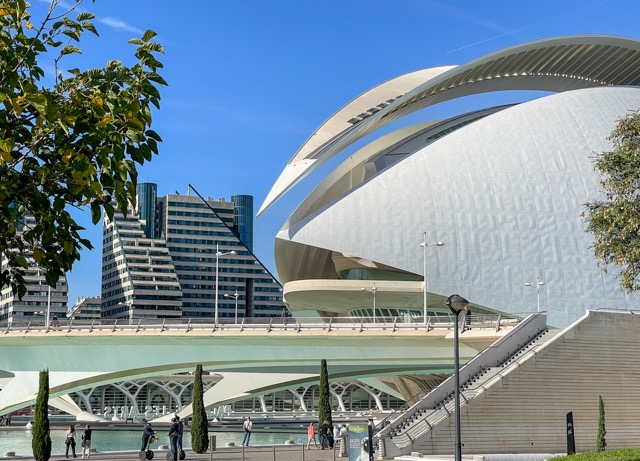
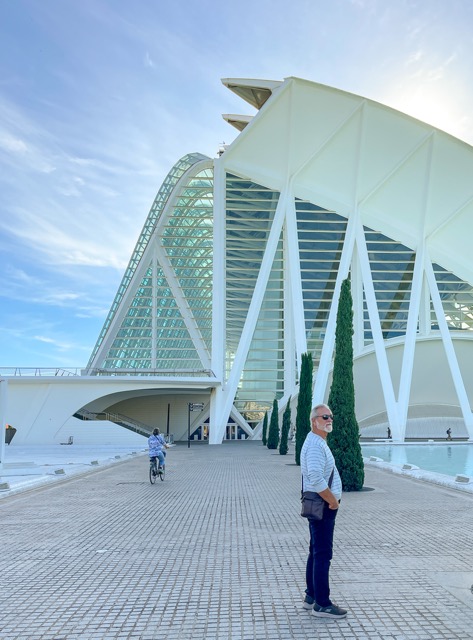
Our second stop was the Hemisféric, a 3D digital cinema with a huge, domed screen that completely immerses you. Several films are shown every day, and we opted to watch “Oceans: Our Blue Planet.” It was spectacular.

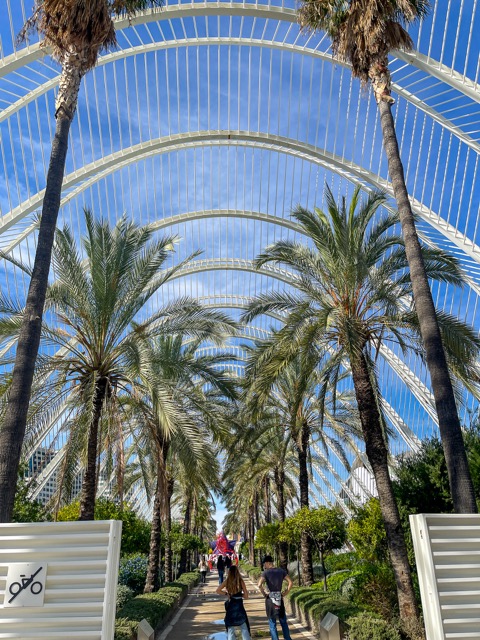
Before heading to lunch with friends, we finished our visit with a look at the Umbracle – a huge open-access garden. We’re planning to book some music and dance performances at the Palau de les Arts. My photos don’t begin to capture the architectural drama of this complex. You can see some aerial shots here – https://cac.es/en/
Week 5 – Ephemeral Art
Ed discovered an interesting way to see our neighborhood, so the next thing you know we’re on a 2 ½ hour walking “Street Art” tour with a very knowledgeable guide. Like many cities, Valencia has a lot of graffiti, tagging, and street art – lots to see as one walks around. But wait, when is it art and when is it vandalism? I was hoping our guide would help to settle this question for me. It turns out it’s a complicated, no one right answer, art is in the eye of the beholder sort of thing.
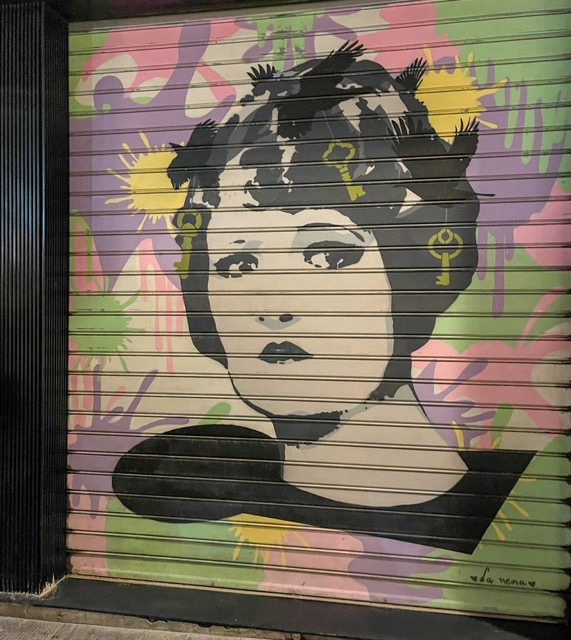
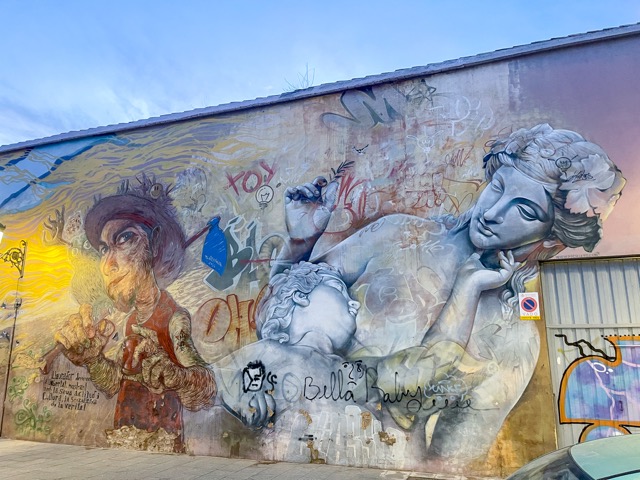
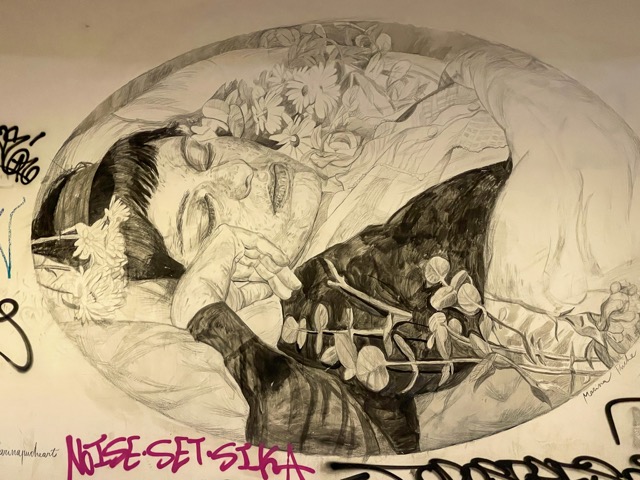
Visiting art museums and galleries is a favorite activity for us. Street art is different. Of course, not being confined to a gallery or museum, there is a much larger and varied audience. Then, there’s the random places it a appears, often surprising walkers by. Street art amuses and enlightens, and sometimes it disturbs or annoys. It’s ephemeral, here today, gone tomorrow. One must enjoy it while it lasts.
Graffiti and street art are often passionate, even subversive. This is art that is relevant in real-time. It’s about the fundamental need of self-expression – trying to make sense of and share the experience of life on Earth. I wonder if street art is any different than cave drawings made by ancient civilizations.
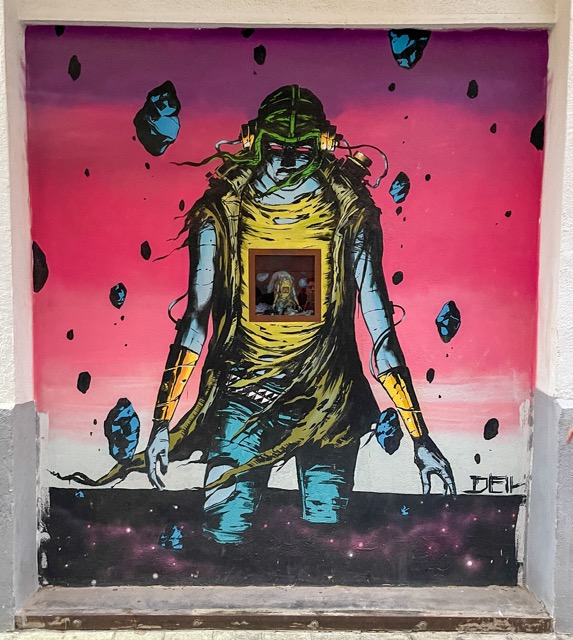
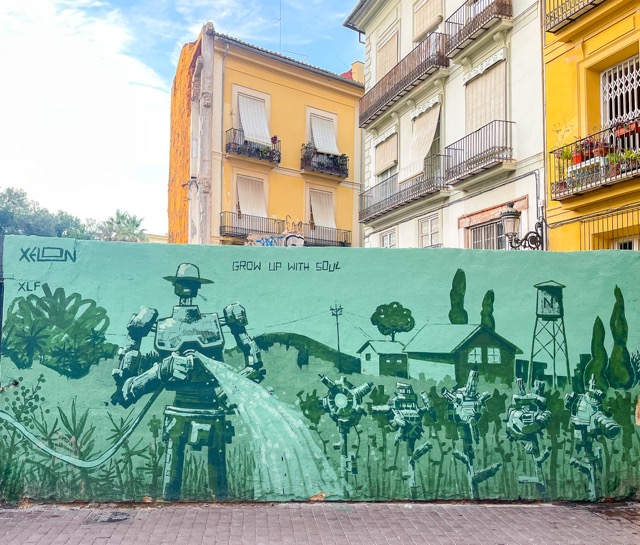
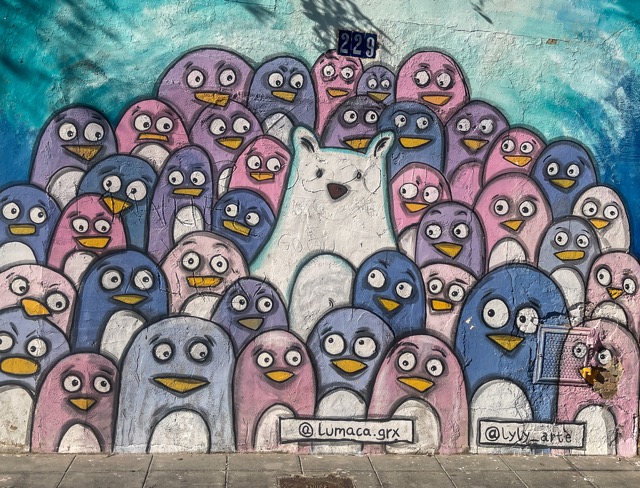
Street art in Valencia has been popular since the early 90’s and currently attracts some of the best street artists in the world. Often, this is a collaborative effort, with teams of artists coming to Valencia from around the world to showcase their work in the form of stencils, spray paint, and stickers. Murals in all shapes, sizes, and styles can be found throughout El Carmen, the area of the old city where we live.
David de Limón grew up in El Carmen, completed an art degree at a Valencia university, and has been graffitiing the streets of Valencia since 1998. He started with lemons, but his black ninja has become his signature image. According to the artist, it’s not an ninja, but rather, a masked man because he needs to hide himself. Street art is still considered vandalism and the ninja’s face is covered with a mask so he can stay anonymous. His images are found all over the city. His ninjas are all over the city.
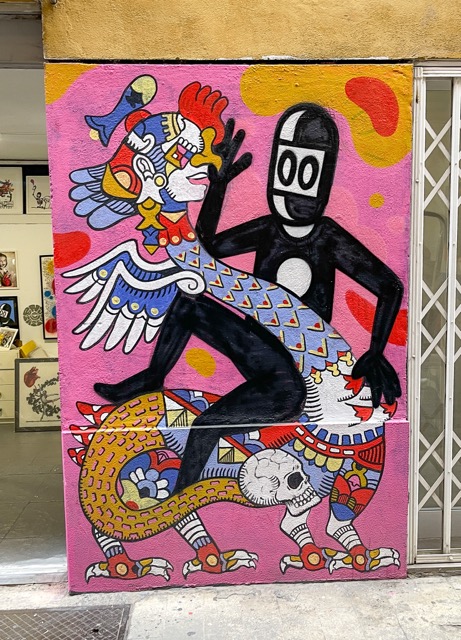
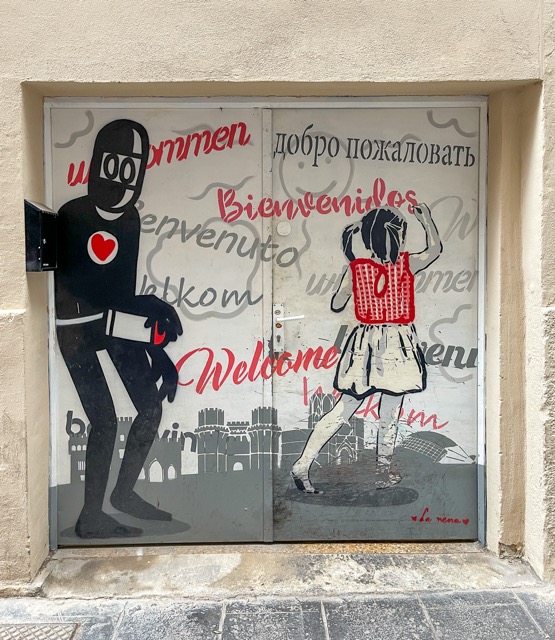
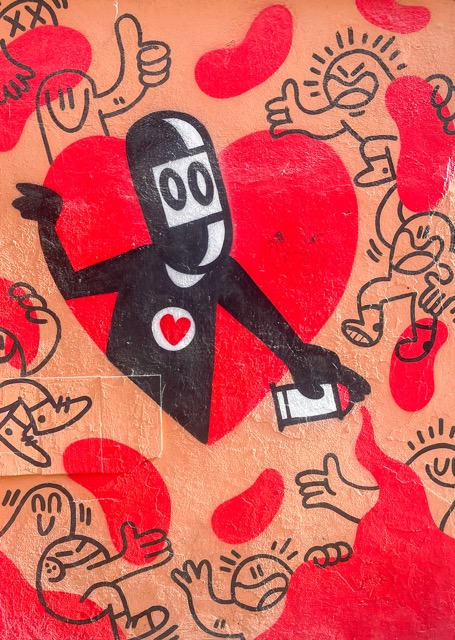
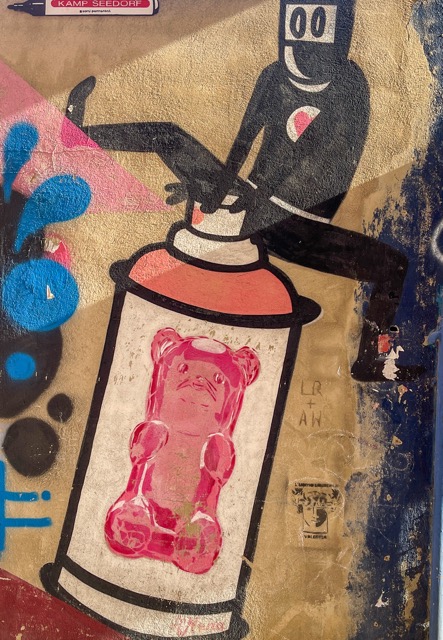
Another well-known artist, Escif, was born in Valencia and has been creating street art here since 1996. His murals examine current social issues, resistance movements, the challenges of capitalism, and the environmental problems of our times.
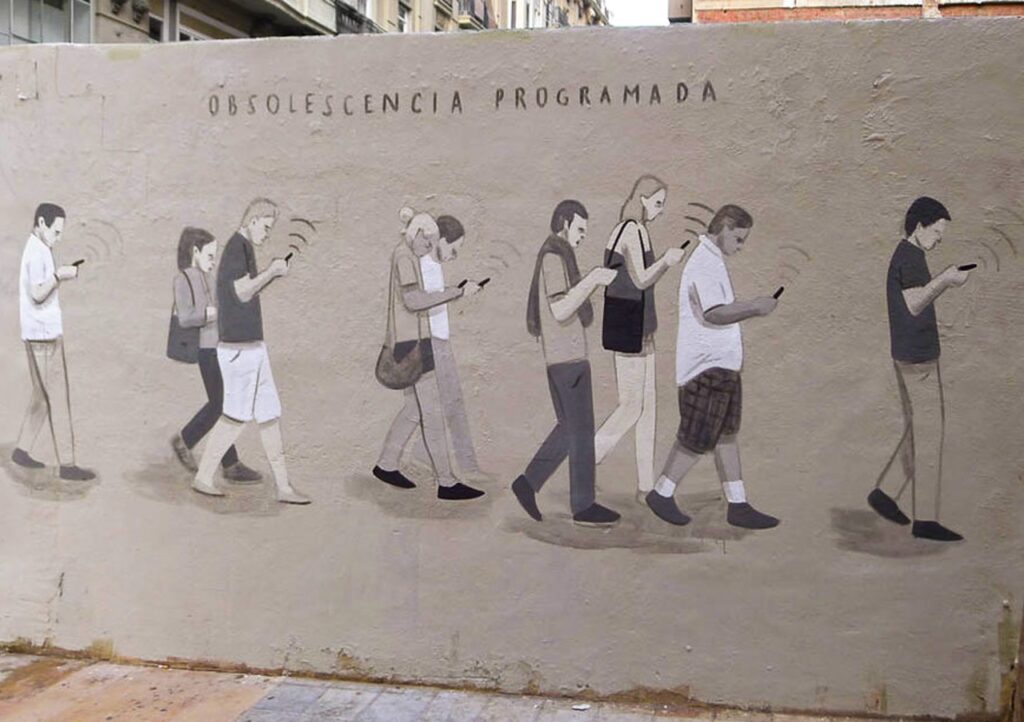
“I see graffiti as a necessary symptom of life in contemporary cities. A painted wall represents a way of using the city that has not been thought of. I find it very interesting that people who live in a city are not satisfied with its use according to the imposed norms, but rather invent new ways of using.” Escif
Julieta, an artist who is part of the XLF-crew (a group of famous artists) was born in and has a Fine Arts degrees from the Polytechnic University of Valencia. Drawings of a Japanese girl are her signature. The girl is called Kawaii which means adorable, in Japanese. The girl in Julieta’s painting always has her eyes closed. In Julieta’s opinion the kawaii is a chameleon – sometimes happy, sometimes sad, sometimes alive and sometimes dead. She is always keeping a secret.

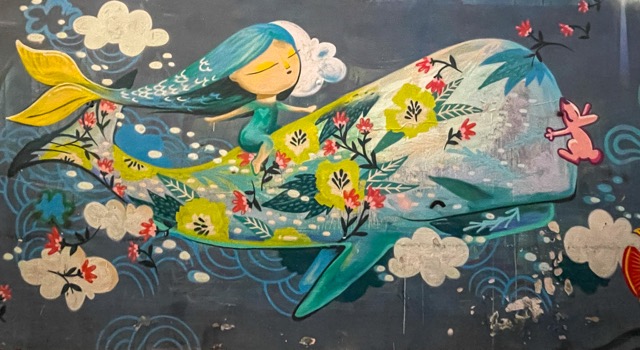
“When I walk through the streets of my city, its walls speak to me, they tell me the thoughts of others… I am attentive, I look and read in silence. I like to walk through the central neighborhoods with narrow streets where everything can be heard better, the sidewalks are packed with people feeling the warmth.” Julieta
Although I very much enjoy viewing fine art in museums, there’s something exhilarating about street art. It’s relevant. It’s bold. Street art provides a way of understanding the issues, values, and struggles of everyday people. So, is it art or vandalism? It is truly in the eye of the beholder.
Week 6 – El Cabanyal & Thanksgiving Dinner
On Thanksgiving Day, we headed to the beach. El Cabanyal is a Valencian neighborhood on the Mediterranean. Historically, this was a small fishing village that became a part of the city of Valencia in the 19th century. The architecture is fascinating with fishing huts, beautiful, tiled facades, and modernist structures. Having fallen victim to neglect in the past, Cabanyal is the up-and-coming bohemian place to be, especially for young hipsters. We wandered through the huge street market that appears every Thursday, strolled along the beach and watched the numerous volleyball games going on. Finally, we had a wonderful tapas lunch at Casa Montaña – a Cabanyal institution since 1836. It was a delightful start to our day.
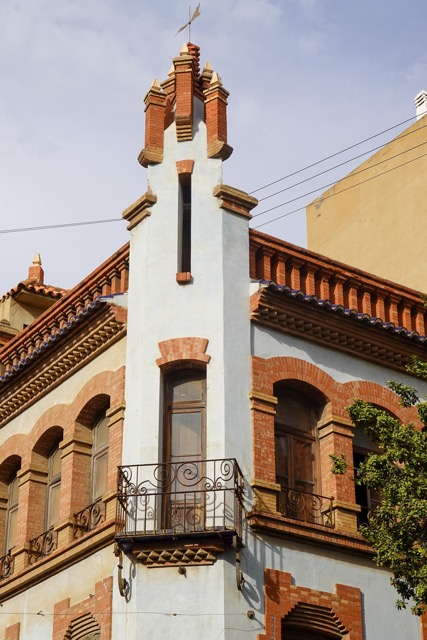
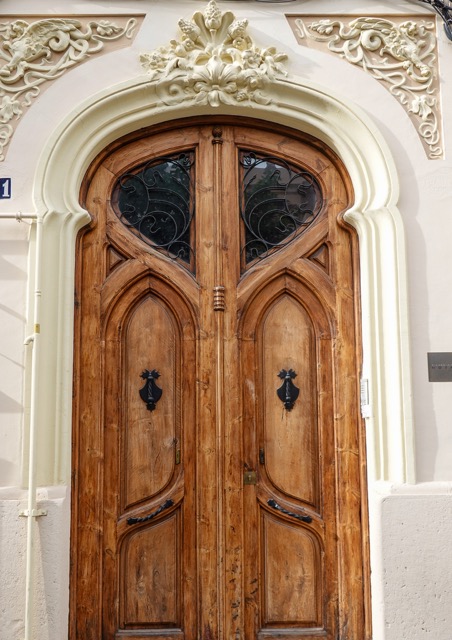
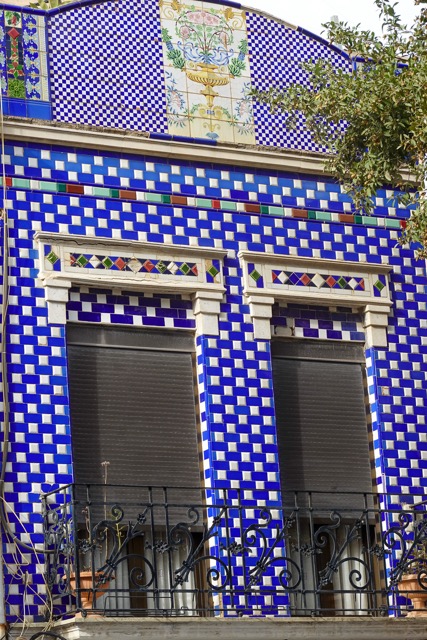
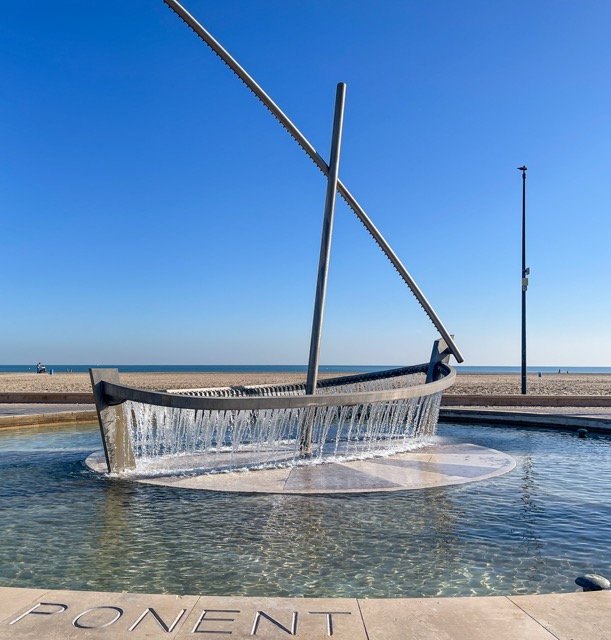
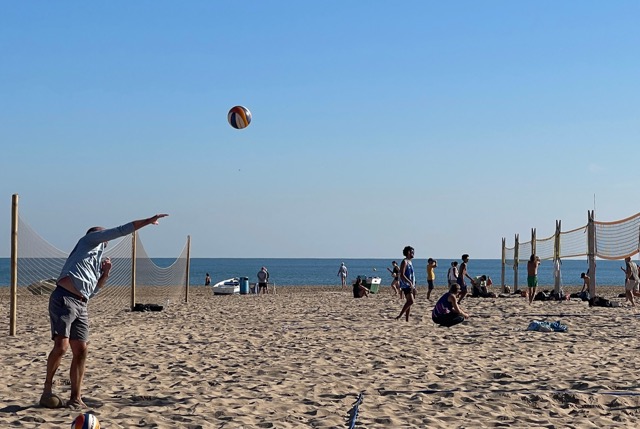
In the evening, we joined fellow expats for a traditional, American Thanksgiving dinner. Gathered in a craft beer pub, we enjoyed turkey and all the trimmings prepared by Spanish people in the kitchen of a nearby Italian restaurant. Best of all, we made some new friends and enjoyed the camaraderie.
Week 7 – Sagunto
Sagunto, just 30 km north of the city of Valencia, is an ancient city that was asking to be explored. An early Iberian settlement, there is evidence of human habitation going back as far as 1,500 BC. The narrow, meandering streets of the old town reveal remnants of the many invaders of Sagunto – Moors, Romans, Visigoths and even Hannibal in 218 BC when he attacked Saguntum (the Roman name for Sagunto) kicking off his (eventually failed) attempt to conquer the Roman Empire.
The Romans re-captured what was left of the city and set about re-building it. A few centuries later, Sagunto was captured by the Moors and they built a hilltop castle, which is a major tourist site today. We climbed the hill only to discover that much of the castle complex was closed. Still, at almost a kilometer long, we were in awe of the sheer effort that went into its construction.
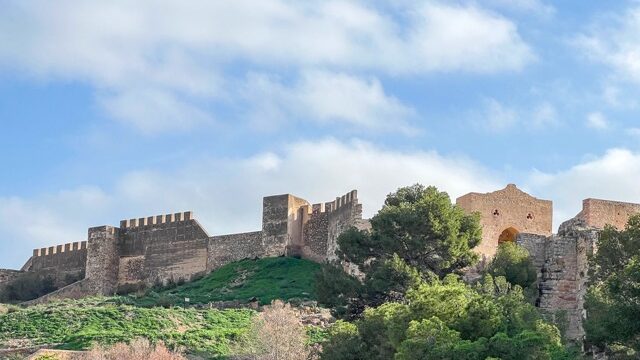
Down the hill in the old city, we wandered through the ancient Jewish quarter with it’s narrow cobbled streets and medieval houses. After exploring with our friends Jim and Heather, we walked a very long way to a lovely lunch before heading back to the train station for the 30-minute ride back to Valencia. A highlight of this brief visit to Sagunto was coming and going via the beautiful Estación del Norte (North Train Station). Built in 1919, this train station is at the center of Valencia next to the bull ring and just 200 meters from the town hall. It’s a wonderful example of Valencian Art Nouveau architecture.
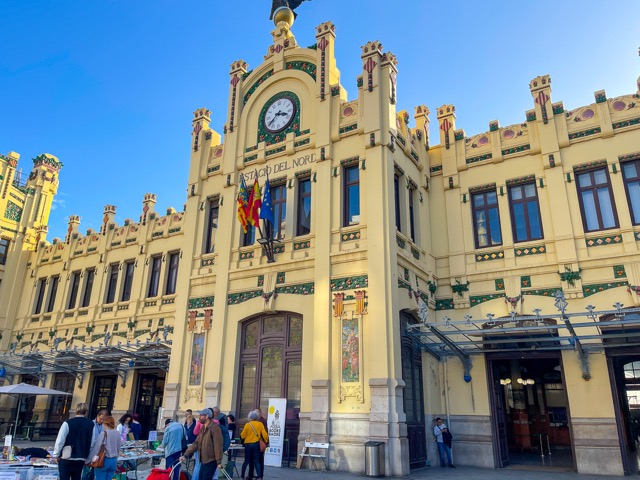
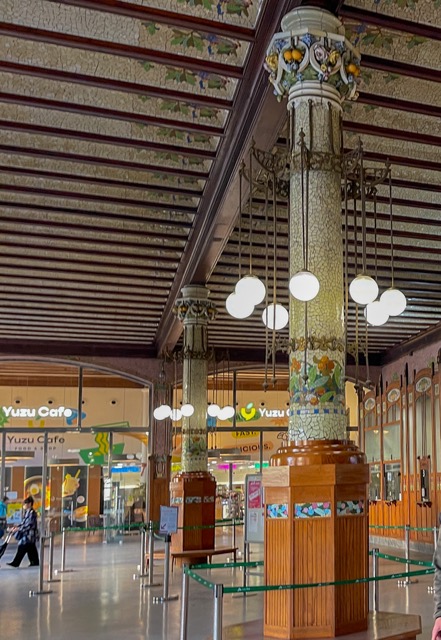
This little adventure was quite a trek – 15,000 steps, to be exact! We indulged ourselves with a much-needed siesta when we arrived home.
Keeping Busy
In addition to these “touristy” activities, Spanish lessons, and driving school, we managed to squeeze in a night at a local jazz club; a dosa (Indian style crepes) making workshop; a concert featuring the Requiem de Fauré (a beautiful piece of classical music featuring soprano and baritone soloists, a mixed choir, orchestra, and an organ); a couple of dinner parties; several new restaurants; and some volunteering at World Central Kitchen. Best of all, we’ve made a few new friends in these last seven weeks.
I hope you’ve enjoyed this little glimpse of Valencia. We’d love to share more of our city with you…come on over!
Tomorrow, we leave for Pennsylvania! We’re so excited to see these amazing kiddos!
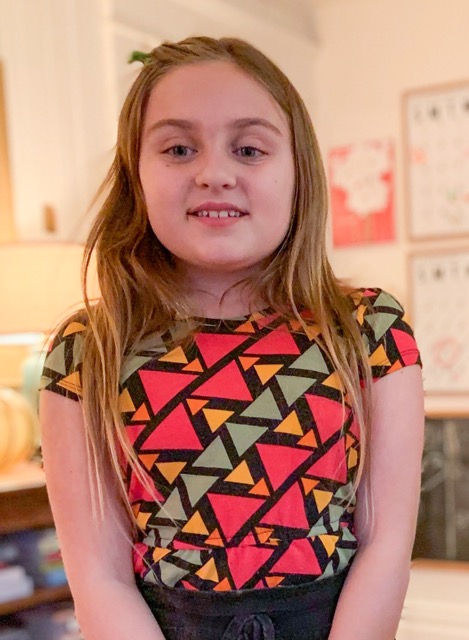
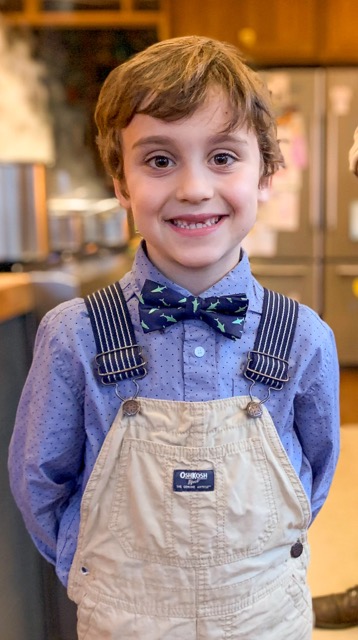
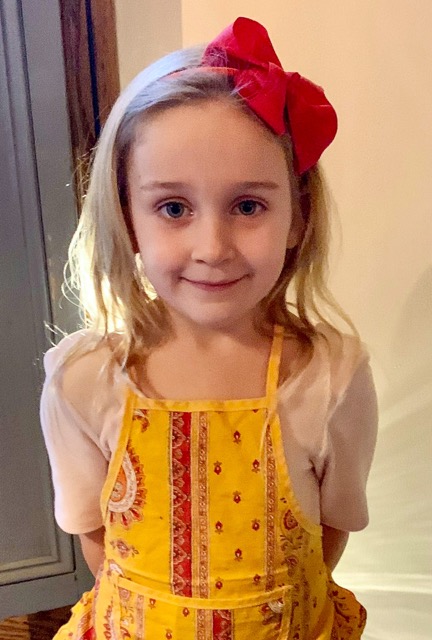
About Us
Welcome to our little corner of the world where we invite you to embark on exciting journeys with us!
We’re Ed and Bonnie, a duo passionate about exploring the world and experiencing its wonders. Our love for travel isn’t just about discovering new places; it’s about sharing those moments with cherished family and friends like you.
Our hope is that you will feel like you’re right there with us, sharing in the excitement and wonder of each destination. Better yet, let’s plan a rendezvous somewhere wonderful! Learn more

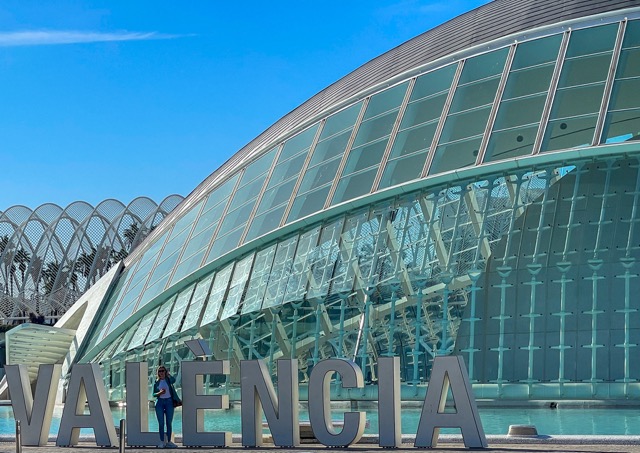
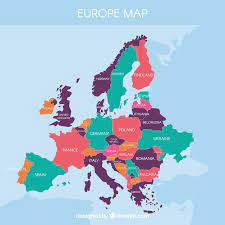
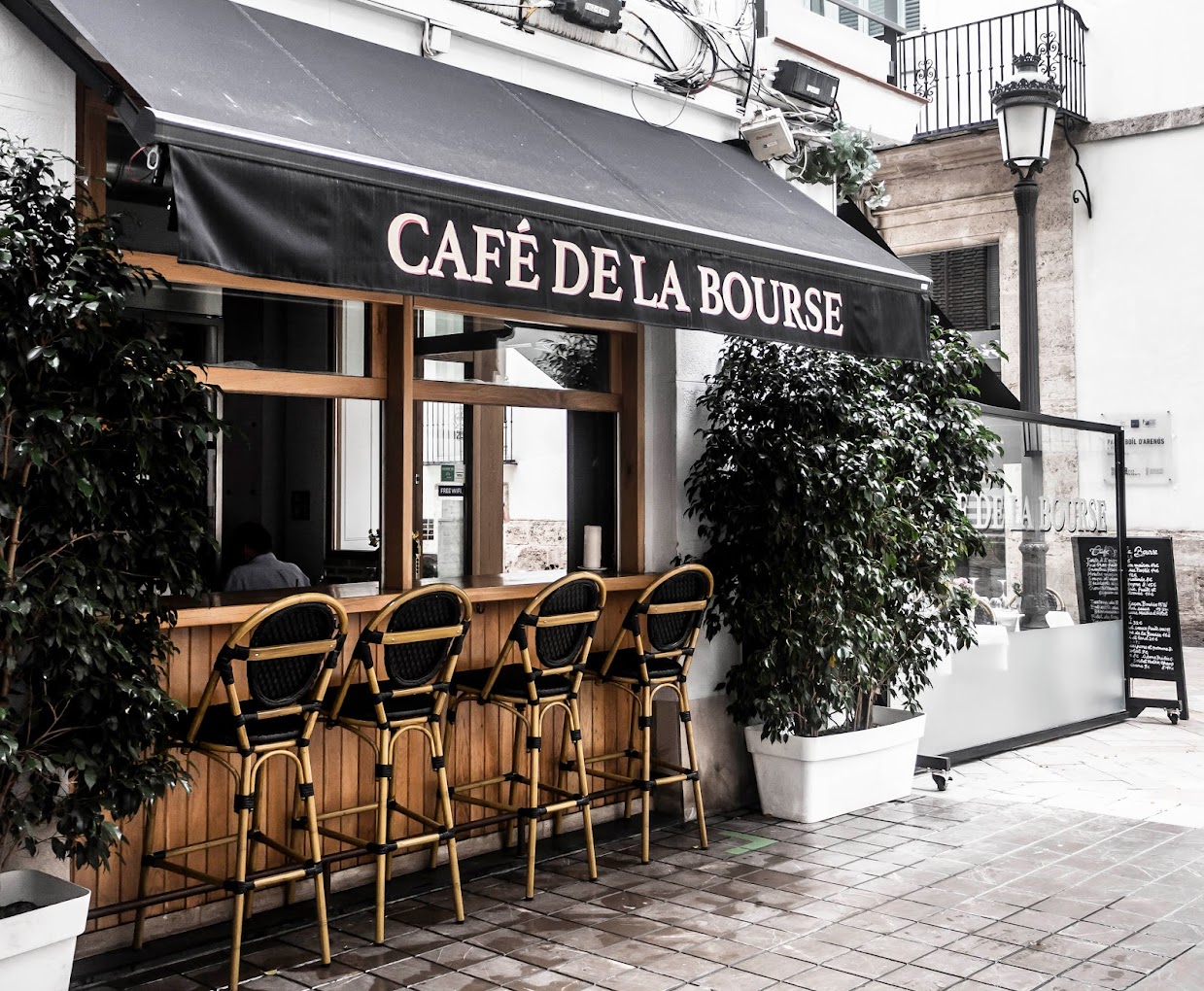
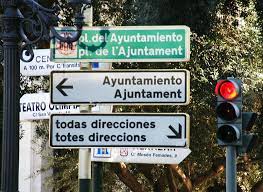
Have a wonderful time with your family- we look forward to seeing you when you return to Valencia!
Can’t wait to see Valencia again!
You certainly made the most of your 7-week “staycation”. I hope you arrived safely & on time in Pennsylvania- the news showed blizzards & power cuts. We look forward to seeing you when you return xx
Amazing! Really enjoyed getting to see all that amazing art!